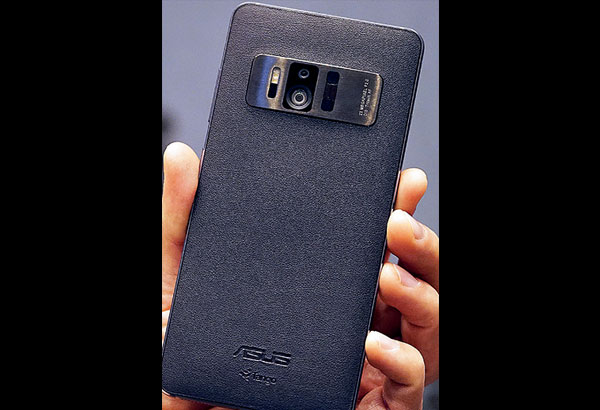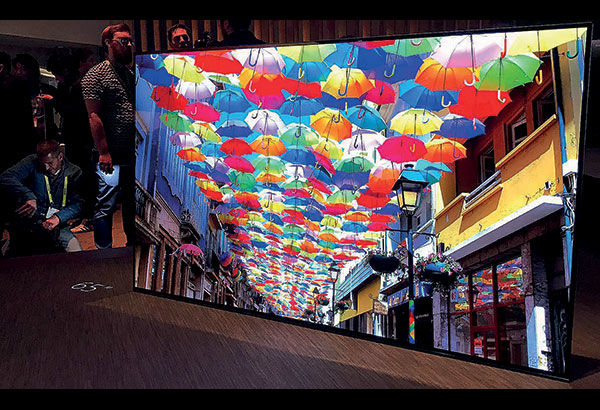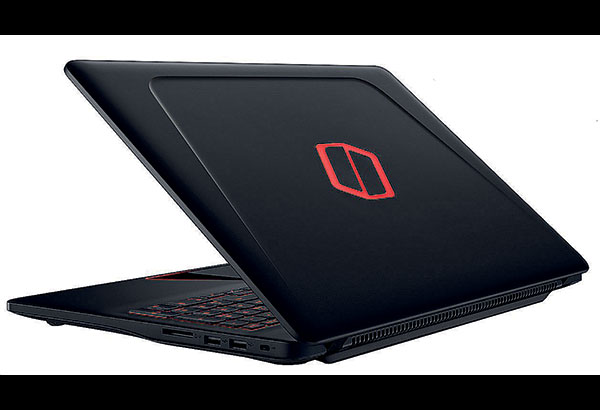This Week In Tech

Asus ZenFone AR comes with Tango, Daydream, 8GB RAM
MANILA, Philippines – All eyes were on the ZenFone 3 Zoom’s launch at CES 2017, but it seems like Asus put more marbles into its equally new ZenFone AR. Just look at how many features it’s pioneering!
The first is compatibility with Google’s Tango AR and Daydream VR platforms. Smartphones such as the Lenovo Phab 2 Pro and Pixel XL already come with one of the two, but no smartphone has ever been complete enough to manage both platforms at once.
An advanced camera system is needed for Tango to work. In the ZenFone AR’s case, it has a trio of cameras (maxing out at 23 megapixels) optimized to handle motion tracking, depth sensing, and area learning – just like how human eyes function.
Once activated, you can display virtual layers over the real world through the ZenFone AR’s 5.7-inch Quad HD AMOLED display for measuring areas and playing augmented reality games. Downloading compatible apps is as straightforward as searching through Google Play and choosing what you want.
Speaking of the brilliant display, that’s what you need for Daydream to work – that, and Google’s affordable View VR headset. Put the two together, and you get one of the better mainstream virtual reality systems in the market. Again, all compatible apps can be found on Google Play, or you could just fire up YouTube and watch 360-degree videos.
Making all these things possible is Qualcomm’s now-outdated, but still powerful Snapdragon 821 processor, as well as 8GB of memory, which is a first in the smartphone realm. As you can expect, this setup will create lots of heat, so Asus installed a vapor cooling system in the ZenFone AR to prevent overheating.
Less advertised, though just as important, is the ZenFone AR coming with Android 7.0 Nougat right away. That would be a first for an Asus smartphone; even the just-launched ZenFone 3 Zoom will arrive with only Android 6.0 Marshmallow on board.
This will obviously be an expensive handset – possibly the priciest ZenFone to date. While no retail prices have been revealed yet, Asus assures everyone it’ll come in the second quarter of 2017.

Sony Launches An Incredible 4k HDR OLED TV
Manufacturers have been trying all sorts of tricks to make televisions interesting again – from turning them into smart entertainment hubs to forcing 3D content down our throats – but to no avail. That’s about to change, however, with Sony’s first-ever foray into OLED TVs.
The Bravia XBR-A1E is an attempt at making the thinnest all-in-one television with the use of OLED panels. It’s a type of technology LG has mastered through the years, but Sony is only now taking a crack at it – and to positive reception.
Available in 77-, 65-, and 55-inch screen sizes, all three models are incredibly thin despite having their sound systems built in. How’s that possible, you ask? Sony developed this thing called the Acoustic Surface sound system, which makes the television vibrate in order to produce sound.
That seems like a major cause of headaches, but Sony claims you’ll never notice the vibrations, no matter how loud the audio gets. And to make sure the bass frequencies are intact, subwoofers (along with all the connectivity ports) are found in the television’s rear stand.
This results in a unique setup that fits well on any flat surface, although mounting on a wall seems to be out of the question.
Of course, this Bravia has all the latest tech for high-quality entertainment, including native 4K and HDR compatibility, a built-in Android TV operating system, and Sony’s brand of accurate color reproduction.
You might be wondering how much this piece of technology costs; we’re actually wondering the same thing. Sony hasn’t disclosed its price or release date yet, but it’s not like that matters. Chances are, none of us can afford this thing.

Samsung Calls New Gaming Laptops Notebook Odyssey
Just as we thought Samsung was giving up on its PC business, the electronics giant unveiled its new lineup of gaming laptops, peculiarly called the Notebook Odyssey.
This is coming during a time when all these “trendy” gaming brands keep sprouting. Lenovo also got into the game recently at CES with its Legion sub-brand, and now Samsung wants a piece of the ROG/Predator/Alienware/OMEN pie. Still follow?
Now, although they’re the first of their kind, Samsung’s gaming notebooks don’t exhibit much innovation, instead choosing to fit in with the competition and hoping that consumers will still notice them.
There’ll be two available sizes for the display: 15.6 inches and 17.3 inches. Both are restricted to a Full HD resolution, but that seems fitting for laptops limited to NVIDIA’s new midrange GeForce GTX 1050 graphics card for now.
The rest of the specifications are what you’d expect from a modern gaming laptop: Intel’s latest Kaby Lake Core i7 processors; up to 32GB of RAM for the 15.6-inch model and 64GB for the larger variant; and multiple storage options featuring SSD+HDD combos.
All that’s unique to the 17.3-inch model, and the Odyssey line, in general, is this button labeled “Beast Mode” found above the keyboard. As you’d expect, it’ll boost gaming performance, though we doubt overclocking is part of the deal.
Both models are available in black, but if you’re lucky, you can also nab the 15.6-inch variant in a really lame all-white color starting next month. Prices begin at $1,199, which is significantly more than what Dell and HP charge for their entry-level gaming notebooks.
5 Key Features Of Qualcomm’s Snapdragon 835
You’re going to hear a lot about the Qualcomm Snapdragon 835 this year. It’s the most advanced mobile chipset currently in existence, and it’ll power several flagship devices in 2017. Let’s list down why it’s so special.
1. It’s manufactured using an advanced 10nm process
This is something we talked about when the Snapdragon 835 was announced last November: Compared to the 14-nanometer designs of previous processors, the 10-nanometer manufacturing process of the Snapdragon 835 is absolutely tiny.
What this means for users is a much more efficient chipset with extra room left for other important components, such as a larger battery or a sturdier frame. If you want to get technical, the Snapdragon 835 is 35 percent smaller and uses 25 percent less power than its predecessors.
2. Graphics will be better than ever
Thanks to the Snapdragon 835’s high-end Adreno 540 graphics processing unit, any device equipped with the chipset will have much better virtual and augmented reality rendering. The audio chip has been improved as well, making the experience all the more immersive.
This will be important, as 2017 will be the year VR and AR applications will fully take off. The Snapdragon 835 is going to be at the center of the mobile push, and if you don’t have one in your next smartphone, you might be left behind.
3. Data connectivity gets needed upgrades
Here’s something we can never get enough of: faster mobile data speeds. Naturally, the Snapdragon 835 is taking this seriously with wireless internet capabilities that rival wired fiber connections at home.
With its X16 LTE modem, the chipset can reach speeds of one gigabit per second; that’s an astonishing 125MB of data every second! Of course, it’ll take a while before wireless network carriers implement such technology, but it’s nice to know we’re getting there.
Oh, and the latest generation of Bluetooth and Wi-Fi technologies are on board — Bluetooth 5 and Wi-Fi 802.11ad, to be exact. They’ll speed up data transfers and greatly lengthen their range.
4. Native support for cool camera features are all here
We already saw tons of high-tech camera features in 2016, from dual-camera setups to speedy autofocus mechanisms, but those often relied on separate components made by smartphone manufacturers. That won’t be the case anymore with the Snapdragon 835.
Qualcomm’s new flagship chip will have native support for highly optimized zoom units, autofocus algorithms, and electronic image stabilization. By having all these available on a single chip, there’ll be less need for chunky camera modules and unsightly rear bumps.
5. Charging to full is a lot faster
While battery technology isn’t getting any better at keeping your devices alive, charging performance is making great leaps each year. We were already impressed by the performance of Qualcomm’s Quick Charge 3.0 technology, but the Snapdragon 835’s Quick Charge 4 tech takes it to yet another level.
After just five minutes of charging, you’ll have enough juice to last five whole hours of continuous use. Charge for 15 minutes, and you can get an average smartphone to 50 percent of its total capacity. That’s 20 percent faster than Quick Charge 3.0!
- Latest






























